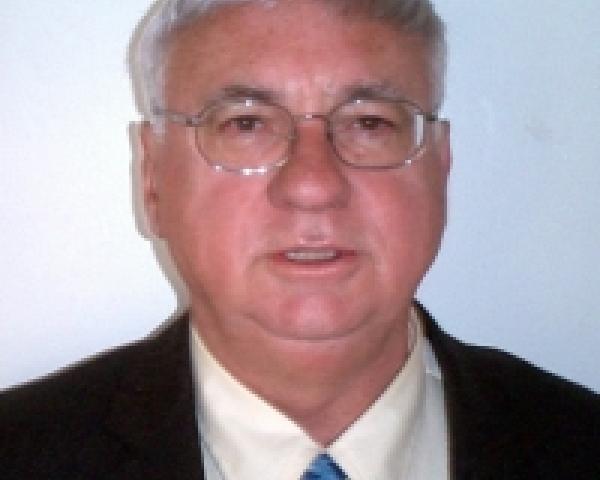The third annual
HITLAB Innovators Summit and World Cup Competition will be held at Columbia University in New York on Nov. 29 to Dec. 1. This outstanding summit brings together the best and the brightest from the emerging healthcare technology industry, academia, medicine, public health and healthcare business leaders. This year’s summit is titled; “Opportunities and Obstacles in Digital Health Diffusion,” and it will include a panel of experts who will also serve as judges when the summit culminates in the HITLAB World Cup global health innovation competition.
Five finalists will be named, and they will present their vision for an emerging technology innovation to help address global public health issues. An overall winner will be named at the close of the summit.
As we wait to see what this year presents, let's look at how last year's five finalists are doing. In a word, they are thriving.
Ceeable
Last year’s HITLAB World Cup winner, Ceeable, has developed a digital vision care mobile app designed to help prevent blindness and other eye diseases. Since last year’s competition, Ceeable has had an incredible year, including winning multiple national awards. New patents for this automated detection and analysis of visual field test results for optic nerve and retinal disease have just been issued in the past few weeks to Caltech. Ceeable now has an exclusive license to this technology from Caltech.
“These patents are a powerful application of machine learning and offer an ability to aid in the automated detection of eye disease on a digital platform,” says Dr. Wolfgang Fink, chief technology officer and inventor of the Ceeable technology. Ceeable was among the top-3 finalists at this year’s American Medical Association’s Healthier Nation Innovation Challenge as one of the “Best New Ideas for Creating a Healthier Nation” and has been profiled in Ophthalmology Times.
There are more than 300 million people worldwide who suffer from retinal disease. This technology platform -- known as the Ceeable Visual Field Analyzer (CVFA) -- has the potential to reach more people in need than ever before. All you need is a laptop, or tablet and connection to the internet.
See also: Virtual Reality: A Role in Insurance?
This technology is now in use in some of the leading medical centers in the U.St.
Ceeable is now actively establishing sales and marketing channels for the commercial launch this quarter.
Rubitection
Rubitection, based in Pittsburgh, has won many healthcare technology awards and placed second in last year’s competition. Sanna Gaspard, PhD and CEO/founder, has developed the technology to modernize early bedsore detection and management to help reduce the risks and improve patient care through a reliable, low-cost handheld diagnostic tool.
Bedsores, also known as pressure ulcers or pressure sores, have been a patient safety issue dating back at least to Florence Nightingale in the 19th century. In the U.S. alone, bedsores affect approximately 2.5 to three million adults each year, with related complications and infections leading to 60,000 deaths and a cost of $11 billion. One alarming study found that 60% of elderly patients with a diagnosis of bedsores die within one year of discharge from the hospital.
At that rate, an estimated 160 people a day in the U.S. will die from complications caused by infections because of bedsores, making these pressure ulcers one of the most prolific dangers facing an elderly patient today. Many medical researchers believe the problem is actually getting worse because of the aging population and a nursing shortage, along with our continued fragmented healthcare system. Many nursing professionals believe that bedsores developed after patient admission are a sign of negligent nursing care, or, as Florence Nightingale said in 1859, “If the patient has a bedsore, it’s generally not the fault of the disease, but of nursing.” Modern nursing professionals call the development of bedsores post-admission to a hospital or nursing home “inexcusable.”
Rubitection is supported by Carnegie Mellon University through the Project Olympus incubator program. The current goal of Sanna Gaspard and Rubitection is to help raise awareness and to continue to build relationships with nursing homes, hospitals and insurance companies looking for solutions to prevent bedsores from occurring in the first place and early detection to prevent infections and complications that can have devastating results.
Ristcall
Ristcall is another 2015 HITLAB finalist that is supported by Carnegie Mellon University through the Project Olympus incubator program. Srinath Vaddepally from Ristcall has created what I refer to as a “mobile smartwatch nursing station.” Ristcall has now upgraded and tested both the hardware and software involved with this very promising wireless wearable technology. It is designed to help nurses more effectively handle the multiple tasks of providing quality patient care and to better prioritizing their precious time. Vaddepally came up with idea when, as a hospital patient, he fell and could not reach his call button to get help.
See also: 5 Apps That May Transform Healthcare
Slips and falls in hospitals and nursing homes are a major patient safety issue and major liability issue. It is estimated that 700,000 to 1 million falls occur every year among patients, visitors, nurses and facility support staff. These facilities face both liability issues and reduced payment from Medicare as a result.
The Ristcall smartwatch allows nurses to respond and prioritize patient care in real time. As I have said before, nurses rock! They are the heart, soul and backbone of our healthcare system. And I think nurses are going to love this technology. The Ristcall technology is now being used by patients and nurses in both a nursing home and an acute-care hospital in Pittsburgh.
Noninvasix
Noninvasix, another 2015 HITLAB World Cup finalist, is pursuing simply remarkable technology with the potential to reduce brain injuries in premature newborns by 90%. Graham Randall, PhD, the CEO of Noninvasix, and his medical research team have made a major pivot this year to focus this technology solely on monitoring oxygen levels in premature babies in neonatal intensive care units. Noninvasix is now developing a final version of this technology that will undergo a FDA 510k clearance review within three years.
Noninvasix commissioned a third-party value analysis, which estimated health insurers could save between $2.4 million and $6.2 million in annual costs to care for children with cerebral palsy resulting from the lack of sufficient oxygen in the brain by using this technology. More importantly, Randall states the entire key to preventing birth defects such as cerebral palsy is being able to monitor premature baby oxygen levels in the brain in real time to allow prompt intervention to dramatically reduce the risk and number of brain injuries caused by the lack of oxygen.
Gary Hankins, MD, the vice chair of the American College of Obstetrics and Gynecology Task Force on Neonatal Encephalopathy and Cerebral Palsy, stated: "This technology has the potential to eliminate 90% of the cases of hypoxic ischemic encephalopathy and subsequent permanent injuries such as cerebral palsy."
This new technology will, I hope, replace current technologies such as fetal heart monitors that obviously monitor heart rates but do not accurately measure the levels of oxygen in the brain and produce results that are indeterminate or unknown 80% of the time. The lack of oxygen, or hypoxia, is thought to be responsible for nearly 25% of neonatal mortality in the world.
Now all the extraordinary work from these 2015 finalists is exactly the type of technological innovation the HITLAB World Cup is all about.
Wellopp
Wellopp has had a remarkable year. Wellopp is focused on the major problem of hospital re-admissions and ineffective discharge planning. It is estimated that $26 billion is spent annually in the U.S. because of hospital readmissions. The reduction of readmission rates is a major initiative both within HHS and Obamacare and the Joint Commission on Accreditation of Hospitals.
Wellopp has designed interactive software for hospital patients, health plan payers and hospital discharge planners. Joe Gough, the CEO and founder, mentioned last year that most hospital discharge plans are thrown in the wastebasket. This digital discharge technology requires the patient to take ownership and help design his or her own shared post-discharge recovery goals through a patient dashboard that provides a daily care path in a real-time, three-way interactive process. In addition, this patient-centric program includes the Wellopp rewards program, where patients get points toward a tangible prize (such as a smart phone) depending on their risk level and adherence to medication and other recommended post-discharge recovery regiments. This three-way, interactive digital approach, which sends patient care messages regarding achieving and rewarding goals, has already achieved incredible results.
Wellopp is working with the largest health system in Michigan and has reduced readmissions 48% for pneumonia patients covered under the health plan. Next, in the first quarter of 2017, Wellopp will be working with a large regional health insurance plan in Ohio and will be conducting a pilot and joint venture with an Ohio Accountable Care Organization (ACO).
(Note: Gough rebranded the original company, “Homeward Healthcare,” after a major launch this year for this consumer-directed brand.)
I have spent the past 35 years attending and speaking at conferences around the country and have enjoyed virtually every one of them — but there is nothing like the HITLAB summit. Most conferences discuss current events and vendors/sponsors showcase their current capabilities. At HITLAB, you will have the opportunity to see where healthcare is going to be 10-20 years from now and how emerging technologies can help address global public health issues like never before.
See also: Not Your Mama’s Recipe for Healthcare
Lauren Alviti McGlade, the director of the HITLAB summit, stated, “We are searching for original ideas to improve healthcare access, delivery and outcomes through technology.” HITLAB will be accepting applications for the World Cup competition through Nov. 11. For more information, contact worldcup@hitlab.org.
My goal is to continue to try to help promote this amazing collaboration surrounding the HITLAB Summit, the sponsors, medical researchers, emerging technologies and the startup companies presenting. Some technologies may be 10 to 20 years down the road, but others, like last year’s finalists, are available now or in the very near future. Why wait?


